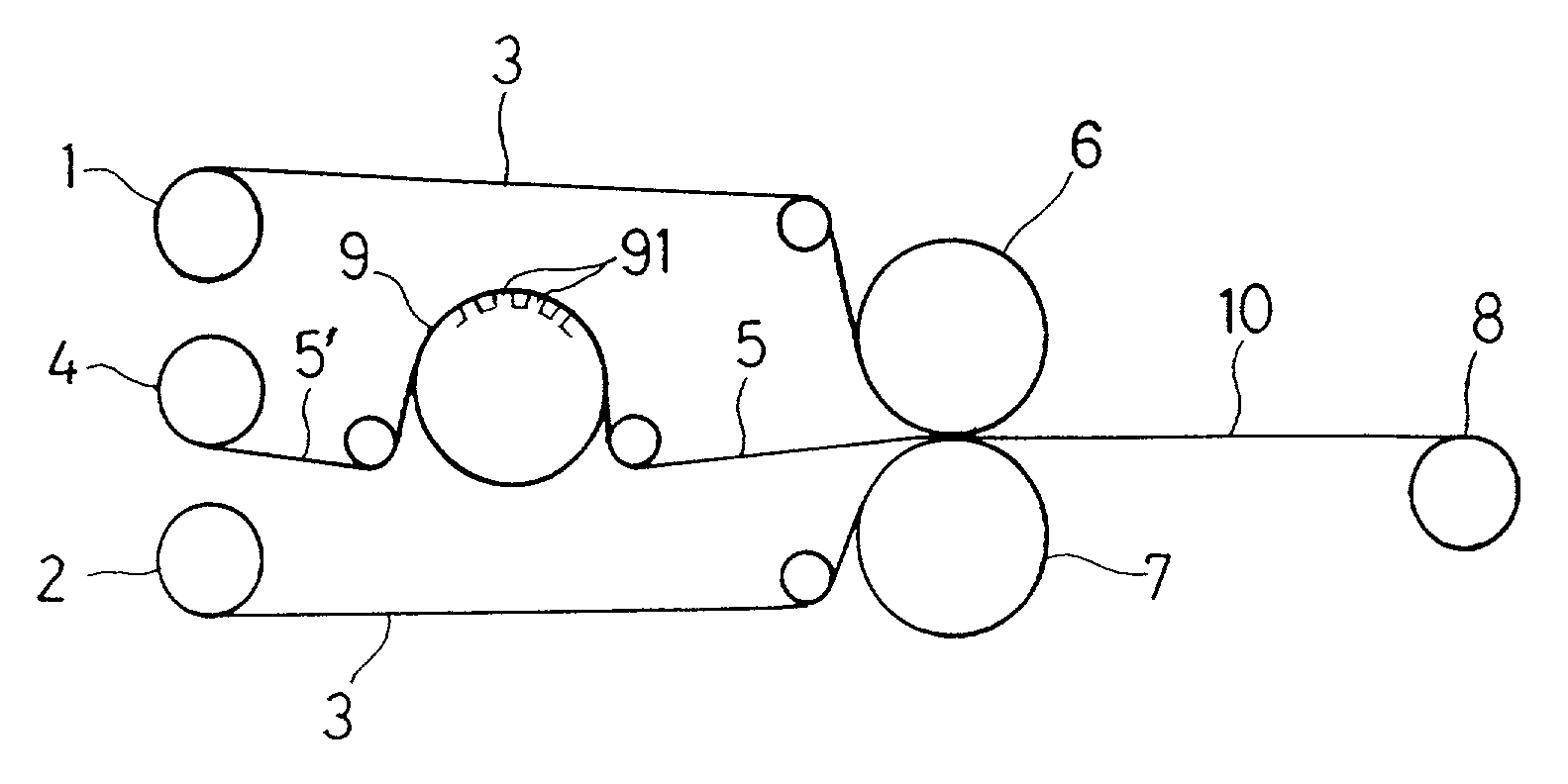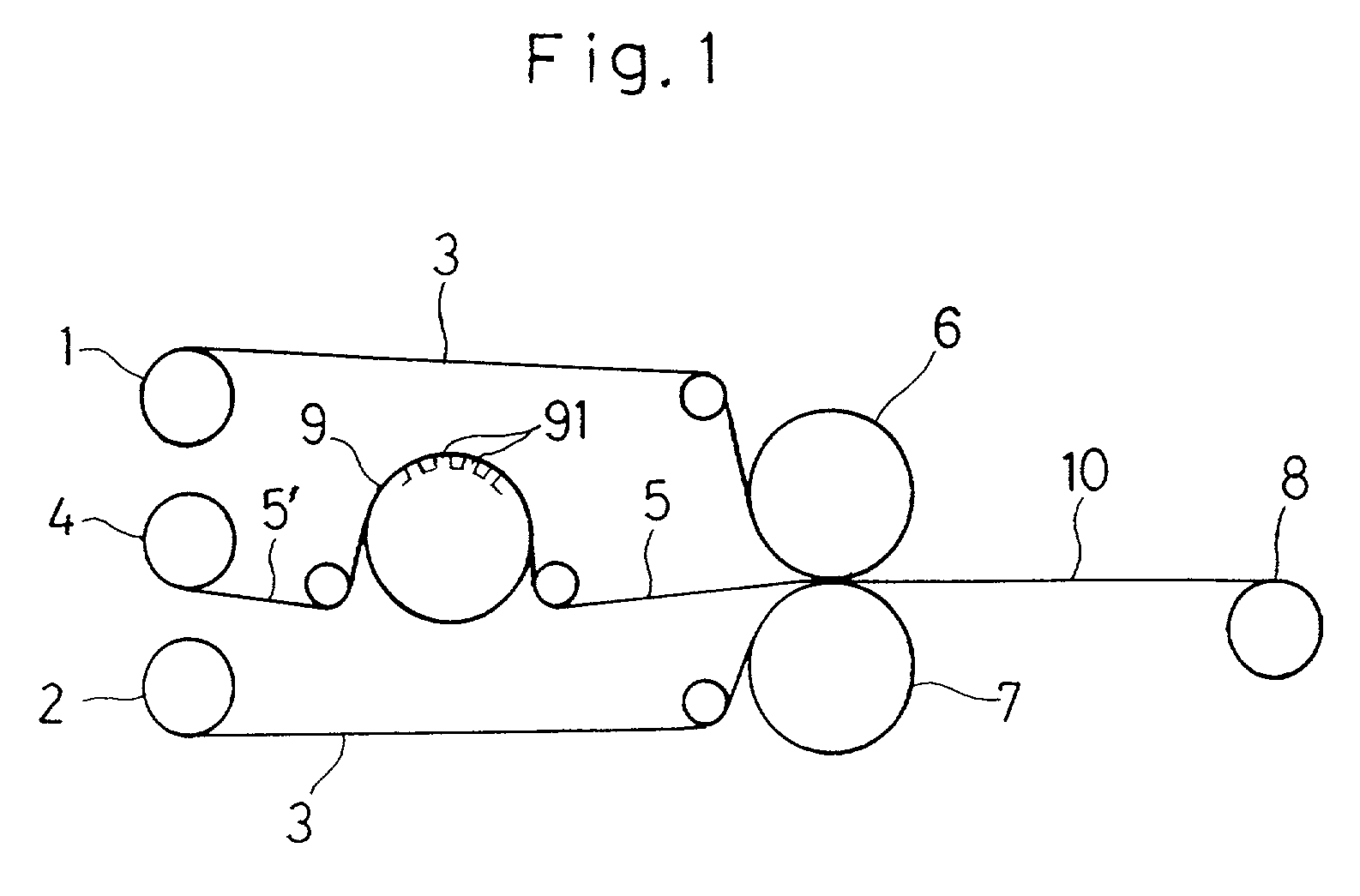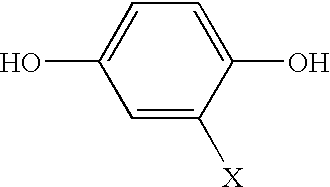Method for producing metal laminate
a metal laminate and metal technology, applied in the field of metal laminate production, can solve the problems of thermal strain on the film by tension, insufficient elimination of residual strain, etc., and achieve the effect of effective elimination of residual strain of the film and excellent dimension stability
- Summary
- Abstract
- Description
- Claims
- Application Information
AI Technical Summary
Benefits of technology
Problems solved by technology
Method used
Image
Examples
reference example 1
[0070]A thermoplastic liquid crystal polymer, which is a copolymer of p-hydroxybenzoic acid and 6-hydroxy-2-naphthoic acid and having a melting point of 280° C., was melt-extruded at an output rate of 20 Kg / hour to give a film by the inflation molding method under conditions that lateral expansion rate was 4.00 times and vertical expansion rate was 2.50 times. As a result, the thermoplastic liquid crystal polymer film having average thickness of 50 μm, thickness distribution of ±7% and MD to TD ratio of tensile strength of 1.05 was obtained. The thermal dimensional change at 200° C. of the film was +0.1% in the MD direction and −0.5% in the TD direction. Also, the thermal deflection temperature was 200° C. This thermoplastic liquid crystal polymer film is referred to as A-type.
reference example 2
[0071]A thermoplastic liquid crystal polymer, which is a copolymer of p-hydroxybenzoic acid and 6-hydroxy-2-naphthoic acid and having a melting point of 280° C., was melt-extruded at an output rate of 20 Kg / hour to give a film by the inflation molding method under conditions that lateral expansion rate was 2.00 times and vertical expansion rate was 5.00 times. As a result, the thermoplastic liquid crystal polymer film having average thickness of 50 μm, thickness distribution of ±7% and MD to TD ratio of tensile strength of 3.5 was obtained. The thermal dimensional change at 200° C. of the film was +0.8% in the MD direction and −2.0% in the TD direction. Also the thermal deflection temperature was 200° C. This thermoplastic liquid crystal polymer film is referred to as B-type.
example 1
[0072]The thermoplastic liquid crystal polymer film of A-type obtained in the Reference Example 1 and electrolytic copper foils having a thickness of 18 μm were used. A roll having a lot of unevenness 91 with a height of 15 μm at a rate of 10 per 10000 μm2 on its surface was attached as the heat treatment roll 9 to the continuous hot roll press apparatus shown in FIG. 1. A temperature of the heat treatment roll 9 was set to 200° C. and a temperature of the press rolls 6 and 7 was set to 260° C. The film of A-type and the electrolytic copper foils were thermally press-bonded by these rolls at a pressure of 10 Kg / cm2, while being drawn at a rate of 2 m / min, to give a double-sided metal laminate 10 having a structure of metal foil / thermoplastic liquid crystal polymer film / metal foil structure. A tension of 3 Kg / 40 cm width was applied to the thermoplastic liquid crystal polymer film 5′. Also, the time for which the thermoplastic liquid crystal polymer film 5′ contacts with the heat tre...
PUM
| Property | Measurement | Unit |
|---|---|---|
| Temperature | aaaaa | aaaaa |
| Length | aaaaa | aaaaa |
| Length | aaaaa | aaaaa |
Abstract
Description
Claims
Application Information
 Login to View More
Login to View More - R&D
- Intellectual Property
- Life Sciences
- Materials
- Tech Scout
- Unparalleled Data Quality
- Higher Quality Content
- 60% Fewer Hallucinations
Browse by: Latest US Patents, China's latest patents, Technical Efficacy Thesaurus, Application Domain, Technology Topic, Popular Technical Reports.
© 2025 PatSnap. All rights reserved.Legal|Privacy policy|Modern Slavery Act Transparency Statement|Sitemap|About US| Contact US: help@patsnap.com



